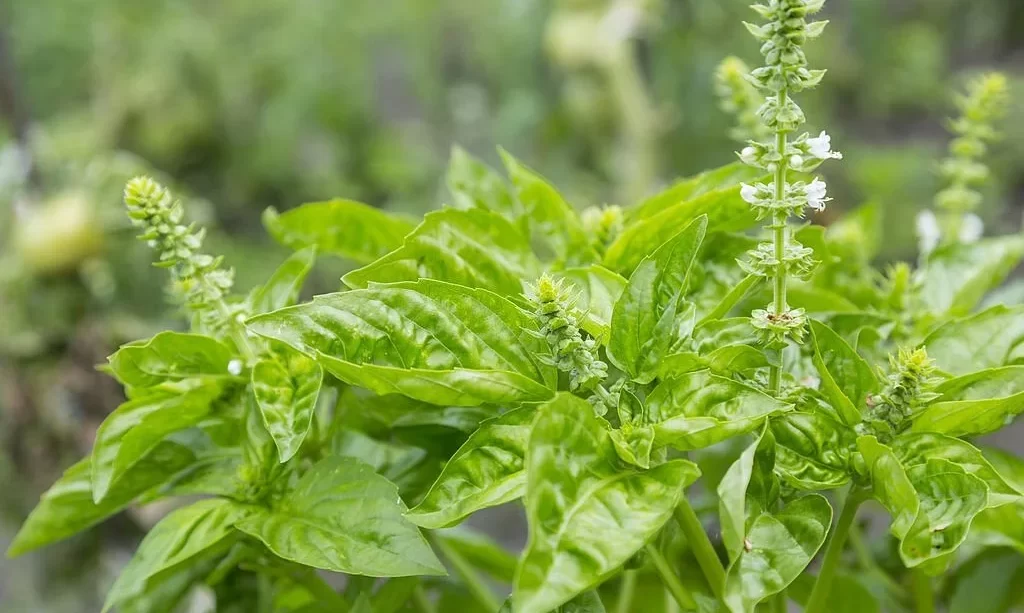Basil, with its lush green leaves and aromatic presence, is a cherished herb that has enchanted the culinary world for centuries. This fragrant member of the mint family, scientifically known as Ocimum basilicum, holds a place of honor in kitchens worldwide, where its vibrant flavor elevates countless dishes. Yet, while basil leaves are celebrated for their culinary prowess, another aspect of this herb often goes overlooked: its delicate, edible flowers. In this exploration, we will delve into the intriguing world of basil flowers, aiming to answer a simple yet tantalizing question: Are basil flowers edible? As we unlock the culinary potential of these blossoms, we’ll discover the possibilities they offer to elevate our culinary creations.
Basil Overview
Before we dive into the culinary realm of basil flowers, let’s take a moment to appreciate the herb itself:
- Botanical Beauty: Basil, a member of the genus Ocimum, is characterized by its oval, aromatic leaves that come in various varieties, each with its own flavor profile. The most common type is sweet basil, prized for its fresh, slightly peppery taste with hints of anise and clove.
- Global Culinary Presence: Basil’s culinary significance transcends borders. It is a key ingredient in Italian pesto, Thai green curry, and Mediterranean salads, among countless other dishes. Its versatility in enhancing flavors has made it an indispensable herb in kitchens worldwide.
- Medicinal and Cultural Significance: Beyond the kitchen, basil has a history rooted in medicinal practices and cultural traditions. It has been used in herbal remedies for its potential health benefits and holds symbolic meaning in various cultures.
Understanding the fundamental attributes of basil sets the stage for our exploration of its blossoms and the delightful culinary experiences they can offer.
Basil Flowers – Culinary Considerations
As we turn our attention to basil flowers, it’s essential to approach them with culinary awareness:
- Delicate Blooms: Basil flowers, like the leaves, are infused with the herb’s distinct aroma and flavor. However, they present a more delicate and visually appealing option for culinary use.
- Culinary Versatility: Basil flowers can be considered a culinary gem, offering versatility in both taste and presentation. Their presence can elevate the aesthetic appeal of dishes, making them a popular choice for garnishing.
- Harmonious Pairing: Basil flowers complement the taste of basil leaves, offering a harmonious synergy when used together in dishes. They share the herb’s signature aroma and flavor but in a milder and slightly sweeter form.
The Edibility of Basil Flowers
Turning to the central question of edibility, it’s worth exploring the factors that contribute to the safe consumption of basil flowers:
- Generally Safe: Basil flowers are generally considered safe for consumption, provided they come from organically grown basil plants without exposure to pesticides or other contaminants.
- Herbal Delicacy: Their use in various culinary traditions and recipes across the globe underscores their status as an herbal delicacy, prized for their unique flavor and aesthetic appeal.
- Caution with Allergies: As with any food, individuals with known allergies to basil should exercise caution when consuming basil flowers. Allergic reactions are possible, although less common compared to reactions to the leaves.
Flavor and Aroma Profile
Understanding the flavor and aroma profile of basil flowers is key to making the most of their culinary potential:
- Sweet and Mild: Basil flowers carry a milder version of the herb’s signature flavor, characterized by a gentle sweetness with subtle notes of basil’s trademark peppery and clove-like undertones.
- Aroma Enhancement: In addition to their flavor contribution, basil flowers infuse dishes with an enticing basil aroma, enhancing the overall sensory experience of a meal.
- Culinary Artistry: Chefs and home cooks alike appreciate basil flowers for their ability to add visual and aromatic finesse to salads, entrees, and even desserts, making them an appealing addition to culinary artistry.
As we continue our culinary journey with basil flowers, we’ll explore the creative ways they can be used in the kitchen and how they can lend their distinct qualities to an array of delightful dishes.
Culinary Uses and Recipes
Discover the diverse culinary applications of basil flowers and get inspired by delectable recipes:
- Garnishing Grace: Basil flowers excel as elegant garnishes for salads, soups, and pasta dishes, lending a burst of color and aroma.
- Herb-Infused Oils: Infuse olive oil with basil flowers to create a fragrant, herb-infused oil that enhances the flavor of various dishes.
- Savory Pairings: Experiment with pairing basil flowers alongside fresh tomatoes, mozzarella cheese, or grilled vegetables for a captivating taste experience.
- Sweet Surprises: Basil flowers can be used creatively in desserts, from adding a hint of basil-infused honey to drizzling over ice cream or incorporating them into fruit salads for a unique twist.
Precautions and Considerations
While basil flowers offer exciting culinary possibilities, it’s essential to keep a few precautions in mind:
- Allergies: Individuals with known basil allergies should consume basil flowers with caution. Monitor for any allergic reactions and seek medical advice if necessary.
- Safe Sourcing: Ensure that the basil flowers you use come from organically grown basil plants that have not been exposed to pesticides or other contaminants.
- Moderation: As with any culinary ingredient, use basil flowers in moderation to avoid overwhelming dishes with their flavor and aroma.
- Responsible Foraging: If harvesting basil flowers from the wild, do so in areas free from pollution or pesticides, and always adhere to local foraging regulations.
Conclusion: Embracing the Versatility of Basil Flowers
In conclusion, the world of culinary exploration welcomes basil flowers as a charming addition to the kitchen. Their delicate beauty, mild basil flavor, and enticing aroma make them a sought-after ingredient for creative chefs and home cooks alike.
While basil leaves have long been celebrated for their culinary contributions, basil flowers offer a new dimension to your culinary repertoire. As you experiment with these delightful blossoms, you’ll discover their potential to elevate both the visual and sensory aspects of your dishes. However, remember to approach basil flowers with consideration for allergies and source them responsibly to ensure a safe and enjoyable culinary experience.
So, why not embrace the versatility of basil flowers in your next culinary adventure? Whether you’re garnishing a fresh salad or infusing oils with their fragrant essence, basil flowers promise to enhance your culinary creations and add a touch of botanical magic to your kitchen.




